Decorative allyium will become a real decoration of any flowerbed or garden. Unusual and original spherical inflorescences are impressive with beauty and texture.
Allyum cultivation does not require any special knowledge or great practical experience. This business is just for the flower - innovators. It is enough to find out the basic needs and preferences of Allyum, the conditions for its landing and care in the open soil, and one can safely begin work. What kind of plant is what is better to choose the arrangement of the bow and how to avoid errors in the process of its cultivation, in this selection of material.
Allium, description of the plant
"Allium" - the Latin name of the decorative onion. This is a perennial grassy plant from the Amarillic family, the nearest relative acquaintance of all the onions and garlic.
- In the natural medium, the allyium is common in the meadows, in the forests, steppes predominantly northern hemisphere.
- Onions Allium has characteristic onion smell and burning taste due to the content of essential oils.
- Allyum root is a bulb, slightly flattened shaped, covered with scales of brown, white or purple color.
- Thickened stem can reach a height of up to 1.5 meters, although there are also low grades. The leaves of the onions are roasting, linear shape and after flowering, as a rule, die away.
- Small flowers are collected in the inflorescence of an umbrella, growing on long flowers. It is spherical loose inflorescences that is the most decorative part of the plant. Some species can "boast" gigantic sizes of such balls that reach about 30 cm in diameter. And the color of the balls is very diverse and impresses the palette of the paints: from gently green and purple to pink and white. Flowering comes in summer: from June to August, although there are both autumn blooming representatives of the family. The duration of flowering in different types of allyum is different, some representatives of the bulbous bloom long enough and even after that they do not lose their decorative attractiveness. Dry balls look at the flowerbed unusually and original.
- The fruction of the decorative onion falls on August - September.
- Decorative onion Allium is widely used in landscape design, for landscaping and decorating gardens, flower beds, country sites. You often use allyum flowers for cutting and making bouquets.

Allyium, types and varieties
Allium has more than 600 varieties that differ in the color, size and form of inflorescence, as well as the height of the onion itself.
There are several approaches to the systematization of allyum species.
Thus, one classification is based on the flowering time of decorative bulbs and is divided into such groups: Rannets-driving (in May), allyums with average blossoms (middle of summer) and late blooming (end of summer-autumn).
Some botany class allyums in the height of their flowerons on: high (more than 80 cm), the average (40-80 cm) and low (less than 40 cm).
Consider the most popular and beautiful varieties of Luke.
- Allyium "GlobeMaster" (Globmaster) - has spherical inflorescences with a diameter of up to 25 cm and a long period of flowering (from June to October). Coloros are reached in length up to 80 cm.
- Allyium "Purple Sensation" (Purple Sensation) is a common garden shape with bright crimson or purple cupid flowers. Coloros about 70 cm, ribbed stalk.
- Allyium "Mount Everest" (Mount Everest) is characterized by snow-white spherical inflorescences (15 cm in diameter) and long arrows reaching up to 100-120 cm. The leaves are last saved by green. Flowers in inflorescences. Large, star shape. Used to compile bouquets.
- Allyium "Hair" (Hair) is highlighted by unusual foliage, siesium shades and spectacular flowers. Highly decorative view with a pleasant thin aroma. Flowers about 3-4 weeks.
- Allyium Sphaerocephalon (Charon) is a beautiful decorative plant blooming in the middle of the summer and continuing to bloom about a month. The inflorescence has an irregular form resembling oval. Coloring inflorescence pink or lilac.
- Allyium "Schubertii" (Schubert) - short, but extraordinarily attractive, plant. The inflorescence of gentle, pink-pink tones resembles a star form. Flowering absolutely different lengths, arrows are not high, up to 30 cm. Blossom starts in June.
- Allyium "Moly" - a low look, forms the inflorescences of golden yellow shades and star shape.
- Allyium "Christophii" (Christofa) is characterized by low blooms (about 30 cm) and huge (up to 25 cm) inflorescences of purple or pink tones. Decorative allyium is especially effective in dry form.
- Allyium Gigantheum (gigantic) has high (about 1-1.5 meters) with flowers and decorative linear leaves. Inflorescence spherical, small, up to 10 cm in diameter, purple color. Flowers about 20 days.
- Allyium "Gladiator" (gladiator) - a tall view with a spherical inflorescence of star flowers of lilac shades.

Allyium, methods of breeding
Lukovichny cultures tend to multiply with a bulb, or rather, children appearing on it. A seed method of planting and reproduction of allyiums is also possible. Consider the advantages and disadvantages of each of them.
Splitting allyum seeds
- Allyum seeds sow in open soil, both in the fall and spring. Some types of allyums spare only when sowing in the winter, thus passing natural stratification. Moreover, artificially created similar procedure does not always give a positive result.
- Seeds can be purchased at the store or assemble independently with available plants. To do this, choose in advance and leave the earliest major copies of inflorescences. After the allyium completely blends, and the seeds will finally cause, - you can collect seed material.
- The seed method of reproduction does not guarantee full repetition of the signs of the parent plant. Usually, plants are developing from seeds with a larger color of inflorescences.
- In reproduction by seeds, the bloom of Allyum does not occur immediately, but only after the bulbs are growing and will reach certain maturity. On average, this process takes from 3 to 6 years. Although there are species that are capable of blooming after the first year of the vegetation. An example is a giant allyium.
Splitting allyum on bulbs, bullballs, dividing bush
- During the Allyum transplant (in the fall), the bulbs neatly (so as not to damage the roots) are separated from the diabry of the maternal bulbs and plant separately, already at a permanent place. What a year after the landing of the bulbous, the allyium will bloom, directly depends on the size of the sizes of subsidiaries.
- In addition to subsidiaries, it is possible to use for breeding and adult bulbs.
- To dilute the allyium on its site, you can apply the shockless heads of the decorative onion. The inflorescences of some types of allyum after flowering form small air bulbs, the so-called bullballs. They are treated with a growth stimulator and planted for a bed for further reversion.
- Lukovo - the rhizable views of allyum multiply in the main division of an adult (at least 3-year-old) bush on the part. Each full-fledged deer must have rhizome with several (2-3) shoots and developed roots.
Allium, landing features
Decorative allyium is an unpretentious plant, which is characterized by increased winter hardiness and high vitality.
Landing Allyum in Open Soil
- The place for landing Allyum is better to choose a sunny, open and wind-protected. The last condition is especially important for tall allyum varieties, so that the wind does not tilted and cut thin long shoots with severe spherical inflorescences. The solunoilubil plant, allyium, responds to the degree of illumination intensity intensity of inflorescence and leaves, so the shadow of decorative bow is contraindicated. Only light half is allowed.
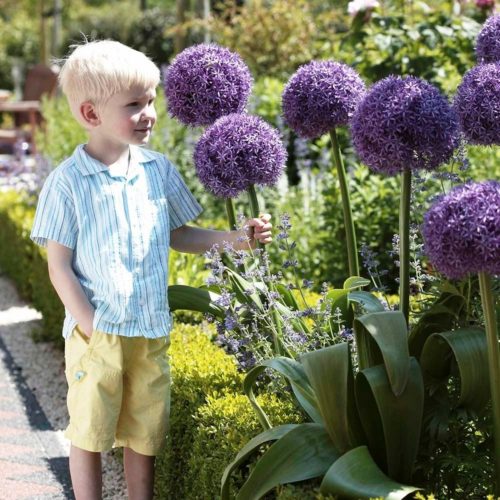
- Allyium grows almost on any soil, preferred a well-drained, water permeable neutral soil. It does not suit only wetlands, with constant stagnation, soil.
- Planting plants is carried out in the spring or autumn period.
- Previously, before landing, the site should be prepared: to accurate the soil and make humus (overwhelmed dung, compost or mineral fertilizers). The bulbous cultures are very sensitive to the lack of potassium in the soil, so in addition to the ground you can make wood ashes - an excellent source of potassium.
- Then, allyum bulbs are planted into the moistened wells. The depth of the seal is determined according to the dimensions of the bulbs. Typically, the depth is equal to the 3rd dimensions of the onion of the onion. The interval between plants is withstanding about 30-50 cm, taking into account their subsequent growing.

- The landing site is better to climb, thus ensuring the moderate humidity and preventing the formation of crust.
- Some flower products practice onion growing with a seaside way. At the same time, pre-clouded and the proceeding seeds are sown into the substrate from the humor, peat and the turf. The arguments of the onions are dive. Seedlings plant at a permanent place aged 60-70 days, in advance of the gradually hardening procedures in the fresh air. Seeders are transplanted into moisturous rows, a depth of 10 cm.
Landing Allyum in a room pot
- In room conditions, the onions are also recommended to plant in spring or autumn.
- Selecting the container for landing allyum, it is better to stop your choice on deep, with a variety of drainage holes, a pot. This is especially important if pots or containers will be exhibited on a balcony or lawn. In rainy weather, all excess moisture will flush into the holes. The overjoyment is destroying for allyum bulbs.
- On the bottom, the pot lay the drainage layer (small gravel, perlite), sprinkle it soil, planting the bulb and, not too sealing soil, sprinkle from above the remaining soil substrate. After landing, the soil is watered with water and sleep with soil, leaving a pot of about 1.5-2 cm to the side.
Allyium, plant care
It is easy to care for the decorative bow, it is enough to know the key features and basic needs of Allyum.
Watering Allyuma
- Decorative onions - a sufficiently drought-resistant plant, capable of transferring short-term drought periods without consequences.
- Stagnation and overabundance of moisture is much more detailed for bulk, rather than its deficit. Excessive moisturizing causes the penetration of the bulbs and the death of the entire plant.
- Especially important is the regular moderate watering during the period of active vegetation of the plant, when the sheet mass and color pains are formed.
- Watering is carried out as needed. In the arid period - more often, in the rainy - after drying the soil.
- A mandatory agrotechnical plant for plant care will also be a weeding, loosening and mulching of the soil.
Feeding and making fertilizers for allyum
- As a feeding, complex mineral and organic fertilizers (compost, wood ash, manure, bone flour) are used.
- The feeder must be made in certain periods of development of the plant to help culture cope with the loads and stimulate further growth and development of Luke.
- In the spring, in the phase of active growth of leaves, laying buds and the formation of bulbs, nitrogen-containing complexes in a nitrate form that stimulate the above-mentioned processes are ideally suited.
- In summer, it is rationally to carry out a liquid feeding with a complete solution of mineral fertilizers.
- At the beginning of autumn for feeding, you need to use dry phosphorus-potash fertilizers, prepare the plant to the winter period.
- For the winter, the site is better to climb by a humor or peat.
Fighting diseases and pests of Allyum
- Incorrect care and increased humidity can provoke the appearance of diseases such as false mildew or shake rot. Signs of pulse dew will be yellowed leaves, with time covered with light mold. If the symptoms designated symptoms appeared on the plant, it is necessary to handle the onions by burgundy liquid or special combined fungicidal preparations (Ridomil MC, pre-energy-energy). As prophylactic measures, experienced flowerflowers warmed allyum bulbs for 12 o'clock at a temperature of about 40 0With in a dryer or oven. In addition, it is important to maintain the bulbs before landing.
- From pests, the root ticks and leek flies are most dangerous. At the first signs of lesion, the plant is treated with tobacco dust (ash) or chlorofos solution (2%).
- One of the main preventive measures that prevent infection with diseases is considered to be a high-quality cleaning of plant residues of the decorative onion at the end of the season and disinfection (heating) of allyum bulbs.
Allyum Transfer and Storage
- Every 4-5 years it is recommended to transplant and rejuvenate decorative allyium. Some types of ephemeroid allyiums dig each year without leaving for wintering. Also recommended to do for other types of decorative onions in the conditions of the middle strip of Russia to prevent their download or extinction.
- It is not necessary to specifically cut the green mass of the bow, it must doubt the natural way. Due to this, it is possible to accumulate and preserve the maximum nutrient amount in the bulb.
- Bulb the bulbs only after complete drying with the entire green mass of the bow. Purified from the ground and the dried adult bulbs are stored in a dry ventilated place at room temperature. The smallest bulbs, in order to avoid drying, are placed on storage in a box with peat or sawdust.
Allyum application
- The most important destination of Allyum is decorative. This is obliged to its unusually original appearance. Perfectly combined with many blooming plants, onions are widely used in the design of landscape designs, flower beds, gardening zones. It is interesting to look like single allyum landings and group cleaners of bulbous crops. Moreover, when combining plants, the height of the bowls of the bow, their color and the duration of flowering are taken into account. The most successful combinations of allyum with roses, iris, peonies, geranium, rustic and other representatives of the flora.
- After cutting, Allyums for a long time (up to 2 weeks) retain a fresh look. Moreover, the characteristic onion smell disappears with a frequent change of water or adding salt chipping in a vase.
- To dry the original spherical inflorescences, they must be cut off until the seed ripening. Such such "blanks" are dried separately for winter bouquets, while maintaining a natural form. For this, the flowers can be simply put in the vase, but without water.
Thus, the cultivation of the onion of Allyum is absolutely not a complex and not laborious process. Rather, on the contrary, the fascinating and fascinating procedure of "obtaining" of unusual, beautiful and spectacular blooming inflorescences - balls.
Unpretentious culture, allium is best breeding with bulbs or seeds. To the soil, the perennial is also not attracted. For successful cultivation of Allyum, such rules should be adhered to: avoid excessive humidity, prevent the lack of potassium in the ground, do not cut the green mass in advance, to periodically rejuvenate and transplant the plant. In high humidity (especially at the end of summer and in the fall), cold harsh winters, the bulbs are recommended to dig and leave for storage until the next landing.

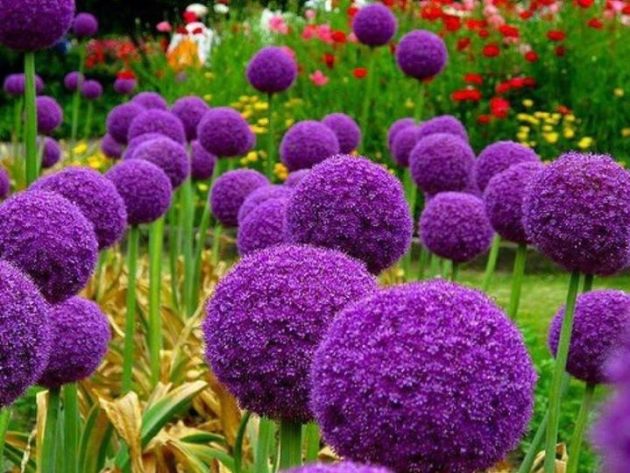
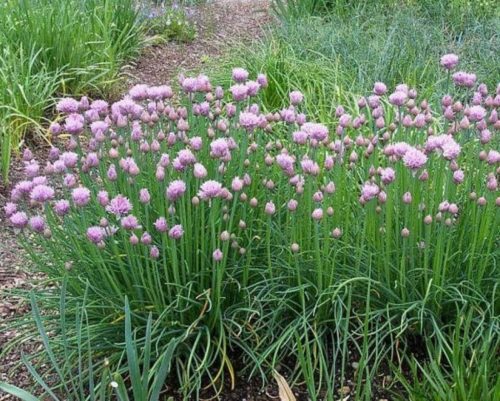
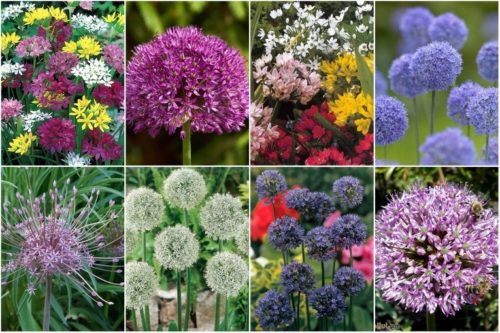



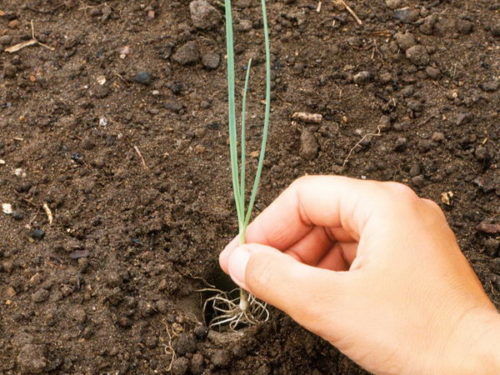


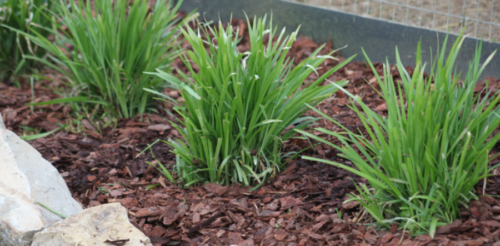

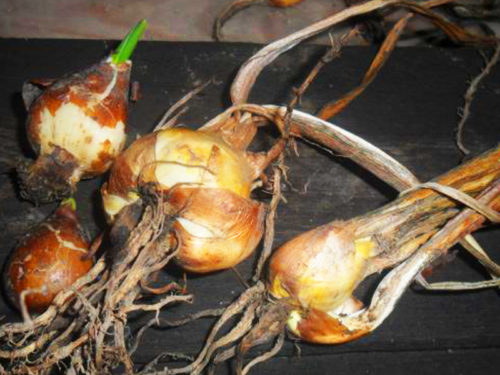


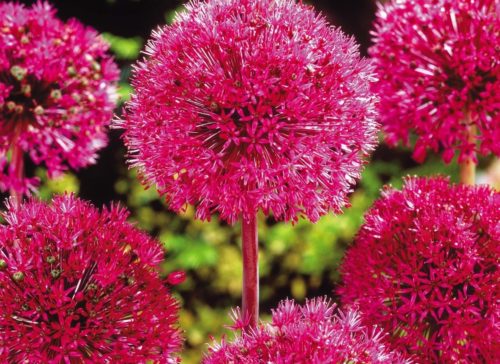
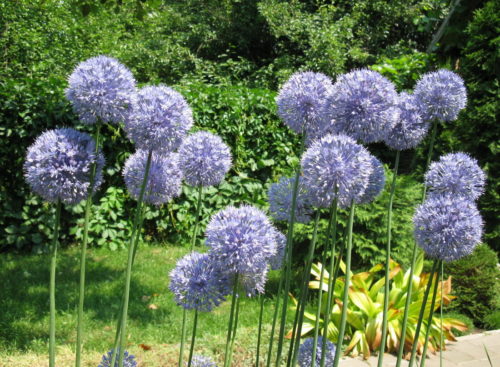




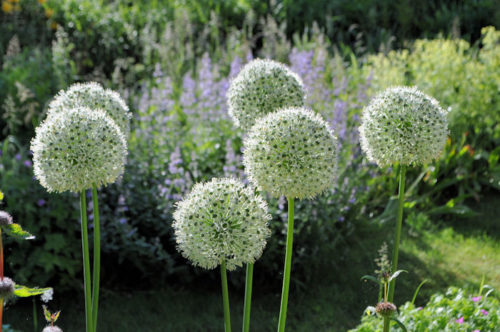

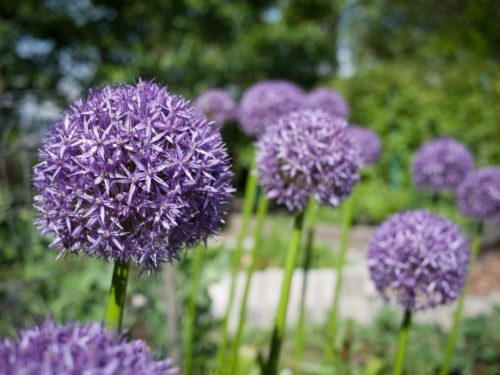
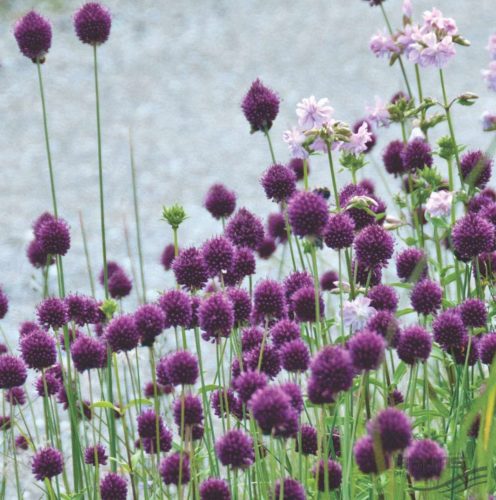
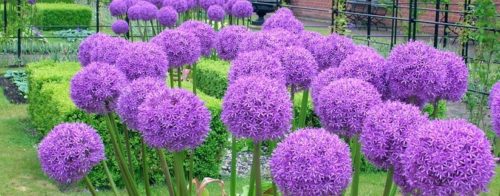


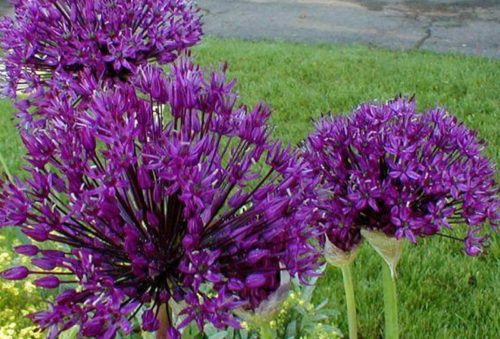
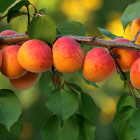


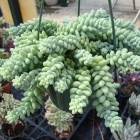
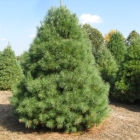







 Start a discussion ...
Start a discussion ...